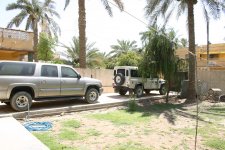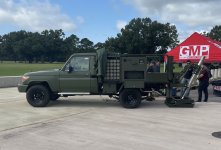OldSolduer
Army.ca Relic
- Reaction score
- 12,245
- Points
- 1,140
In 76 we got a military version of the Silverado, we dubbed it the 5/4 . It held up fairly well until the dreaded LSVW came into service. I preferred my 5/4 over that stupid self igniting LSVW piece of crap.1/4 ton vehicles don’t carry much anymore.
Definitely not 3+ kitted out soldiers.
A 1500 (Ram or similar chassis) IMO would be a bit smallish but a 2500 with a suitable engine (no electric, no computers etc - just a basic truck) and cargo capacity. Something the drivers and maintenance people can repair easily. Kinda like the old 3/4 except bigger.








